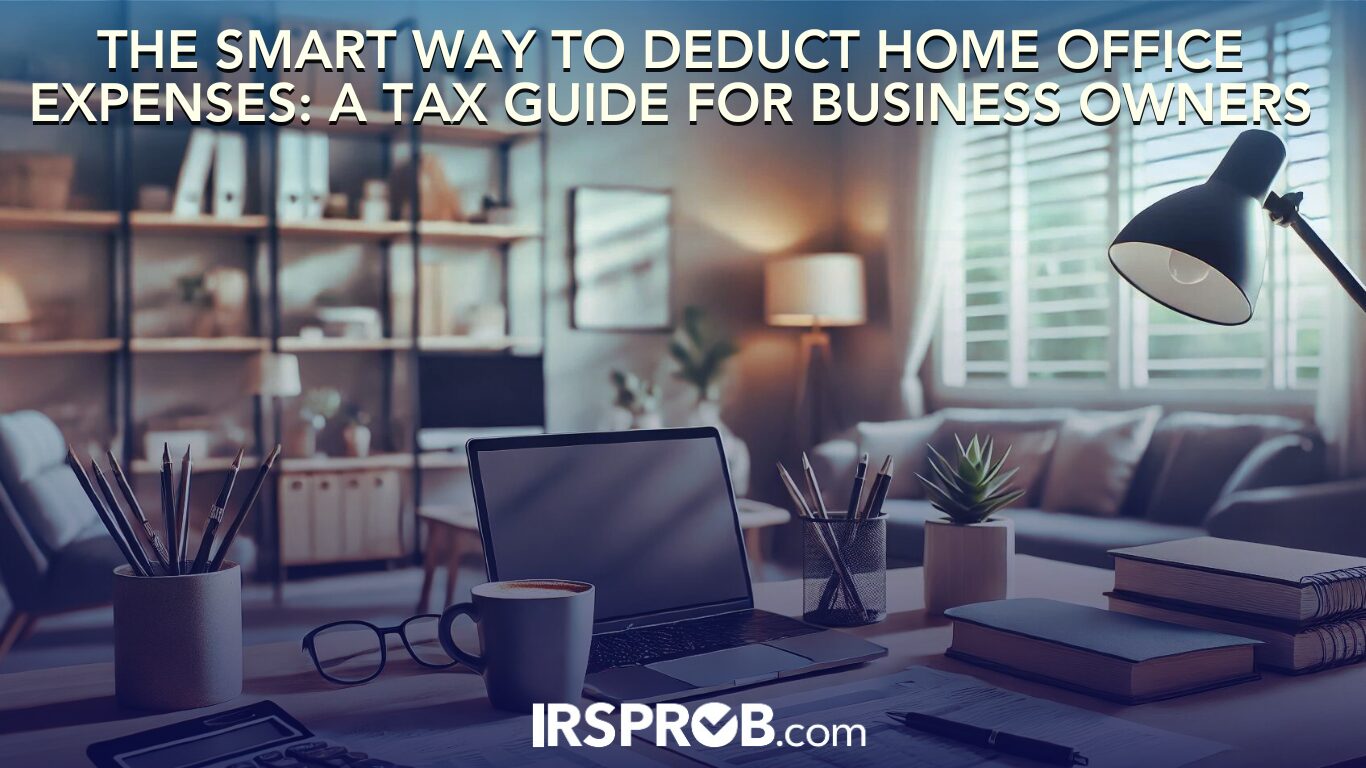
If you run a business from home, understanding how to take advantage of the home office deduction can significantly reduce your tax burden. The rules for claiming this deduction are clear, but often overlooked by small business owners. Here’s everything you need to know to make sure you’re not missing out on valuable savings.
Qualifying for the Home Office Deduction
To qualify for the home office deduction, the space must meet one of the following conditions:
- Exclusive and regular use as the principal place of business: This means that your home office must be used exclusively for work purposes.
- Client or patient meeting space: If you regularly meet clients, patients, or customers at home, the space used for these meetings may also qualify.
- Separate structure: A separate structure not attached to your home but used in your business, such as a studio or workshop, qualifies.
- Storage of inventory: If part of your home is used to store inventory or product samples, that portion may also be deducted.
- Daycare facility: If your home is used as a daycare, you may qualify for the deduction based on the percentage of time the space is used for daycare operations.
What Expenses Can You Deduct?
Expenses related to your home fall into three categories:
- Deductible regardless of business use: Some expenses, such as mortgage interest and real estate taxes, are deductible whether or not you use your home for business. However, when part of the home is used for business, these expenses may be proportional between personal and business use.
- Deductible only for business use: Expenses like repairs and maintenance, utilities, and home insurance are deductible only for the business portion of your home.
- Direct and indirect expenses: Direct expenses, such as painting your home office, are fully deductible. Indirect expenses, like utility bills, are prorated based on the percentage of your home used for business.
Simplified Home Office Deduction
For small business owners who want to minimize the complexity of tracking expenses, the IRS offers a simplified method for claiming the home office deduction. Under this method, you can deduct $5 per square foot of home office space, up to 300 square feet. This is a great option for those with smaller home offices or who prefer less paperwork.
However, keep in mind that while this option simplifies recordkeeping, it may not yield as large a deduction as the traditional method of calculating actual expenses.
Calculating Your Home Office Deduction
The amount of the home office deduction depends on the percentage of your home used for business. This can be calculated in a few different ways:
- Square footage method: Divide the square footage of the space used for business by the total square footage of your home.
- Room method: If all rooms are of similar size, divide the number of rooms used for business by the total number of rooms in your home.
For those running daycare facilities, calculating business use involves factoring in the hours the space is used for daycare activities versus personal use.
Depreciation and Improvements
When you use part of your home for business, that portion of your home is considered nonresidential real property and is depreciable over 39 years. Improvements made after you begin using the home for business, such as a new roof or heating system, are depreciated separately.
For example, if you install a new furnace in 2024, the business portion of the cost can be depreciated over the next 39 years. It’s important to note that depreciation recapture rules apply if you sell the home, meaning that any deductions claimed for depreciation will be added back to your taxable income when you sell.
Common Mistakes to Avoid
Many business owners fail to maximize their home office deduction due to misunderstandings of the rules. Here are some common mistakes:
- Not meeting the exclusivity rule: The area used for business must be used exclusively for that purpose. If the space is also used for personal activities, you cannot claim the deduction.
- Neglecting to prorate expenses: Expenses like utilities must be prorated based on the percentage of your home used for business.
- Failing to depreciate improvements: Any improvements made to the home that affect the business portion should be depreciated, providing additional deductions over time.
Outside Considerations: Energy Credits for Home Offices
An additional way to reduce your tax bill is by exploring energy tax credits, particularly if you’ve made energy-efficient upgrades to your home office. Federal tax credits are available for energy-efficient improvements, such as installing solar panels or upgrading your heating and cooling systems. These credits can further enhance the tax benefits of running a business from home.
Conclusion
For business owners, the home office deduction can be a powerful way to lower tax liability, but it requires careful recordkeeping and an understanding of IRS rules. Whether you opt for the simplified deduction or the actual expenses method, making sure you take full advantage of this deduction can save you thousands of dollars annually. Proper planning and compliance with IRS guidelines will ensure you keep more of your hard-earned income.
For professional tax advice and help navigating the complexities of home office deductions, feel free to reach out to our team at IRSProb.com.







